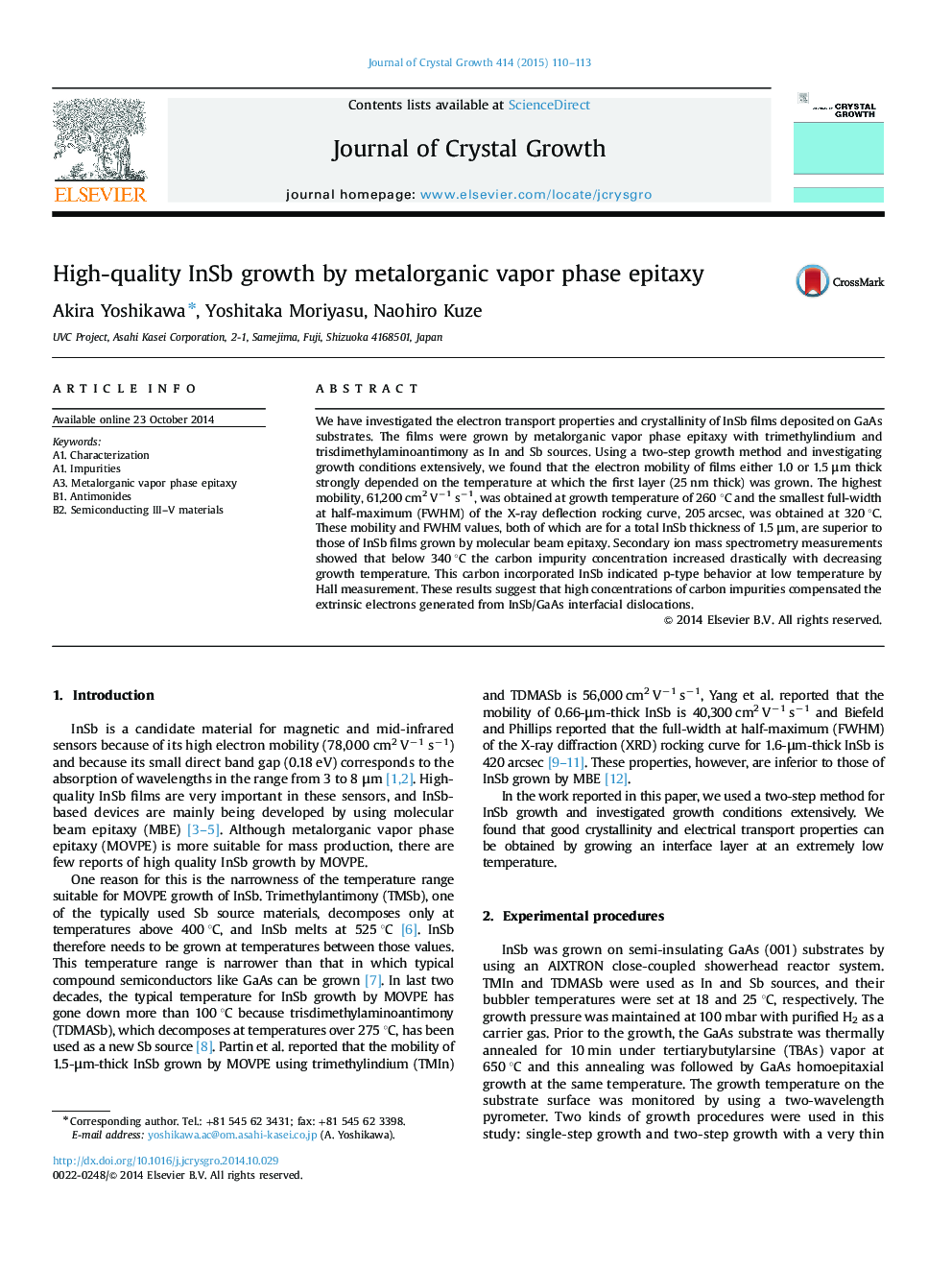| Article ID | Journal | Published Year | Pages | File Type |
|---|---|---|---|---|
| 1790133 | Journal of Crystal Growth | 2015 | 4 Pages |
•We have investigated the electron transport properties and crystallinity of InSb films deposited on GaAs substrates by a two step growth method.•The highest mobility, 61,200 cm2 V−1 s−1, was obtained at 240 °C and the smallest FWHM of the XRD rocking curve, 205 arcsec, was obtained at 320 °C at 1.5 μm thickness.•This high mobility caused by high concentrations of carbon impurities compensated the extrinsic electrons generated from InSb/GaAs interfacial dislocations.
We have investigated the electron transport properties and crystallinity of InSb films deposited on GaAs substrates. The films were grown by metalorganic vapor phase epitaxy with trimethylindium and trisdimethylaminoantimony as In and Sb sources. Using a two-step growth method and investigating growth conditions extensively, we found that the electron mobility of films either 1.0 or 1.5 μm thick strongly depended on the temperature at which the first layer (25 nm thick) was grown. The highest mobility, 61,200 cm2 V−1 s−1, was obtained at growth temperature of 260 °C and the smallest full-width at half-maximum (FWHM) of the X-ray deflection rocking curve, 205 arcsec, was obtained at 320 °C. These mobility and FWHM values, both of which are for a total InSb thickness of 1.5 μm, are superior to those of InSb films grown by molecular beam epitaxy. Secondary ion mass spectrometry measurements showed that below 340 °C the carbon impurity concentration increased drastically with decreasing growth temperature. This carbon incorporated InSb indicated p-type behavior at low temperature by Hall measurement. These results suggest that high concentrations of carbon impurities compensated the extrinsic electrons generated from InSb/GaAs interfacial dislocations.
